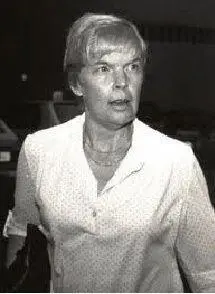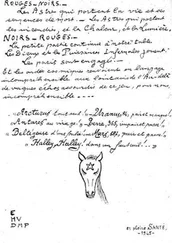In the end, Bernardo got a life sentence and was classified as a dangerous offender, meaning he would never get out of prison. Bernardo is currently serving his term at the maximum-security prison at Kingston Penitentiary, in the segregation unit. He spends twenty-three hours every day in a four by eight-prison cell.
Homolka was released from prison in June of 2005. Since her release, she’s remarried and now goes by the name, Emily Bordelais, and is awaiting a pardon. There is a Cause set up petitioning to stop her from obtaining this pardon. The website is:
http://www.causes.com/causes/475014-stop-karla-homolka-from-getting-a-pardon
Dorothea Puente

Dorothea Puente was born on January 9, 1929, in Bernardino County, California. In 1945, she married a soldier named Fred McFaul who had just returned from the war. Their marriage, though, only last three years. Puente became desperate for money and started forging checks which landed her in jail for six months.
Puente got pregnant just after being released, but gave the baby up for adoption. In 1952, she again married, and this time the marriage lasted for fourteen years. She had a few scrapes with the law in the 60s, operating a brothel and being arrested for vagrancy. She divorced her husband of fourteen years and married Robert Puente, who was nineteen years her junior. That marriage lasted but two years.
In 1981, Puente started renting a boarding home with her friend Ruth Monroe. There, the murdering began. They went into business together attending to the elderly and mentally handicapped people. After a short time in business together, Ruth Monroe died suddenly and her death was ruled a suicide by the police. Apparently, the cause was an overdose of Codeine and Tylenol.
Just four weeks later, Puente was arrested and subsequently sent to prison for five years after a seventy-four-year-old man claimed she was drugging and stealing from him. She served only a few years for good behavior. While she was in jail, she had a pen pal, Everson Gillmouth, seventy-seven, who picked her up after her release. They planned to marry, and rented an apartment on F Street in Sacramento, California.
Once they were settled in their new place, a repairperson named Ismael Florez was hired by Puente in November of 1985 to do some woodwork for her. For his efforts, she gave him Gillmouth’s 1980 Ford pickup as well as $800 cash. She hired Florez build her a box, allegedly to store papers and books, and instructed him to make it two feet by three feet by six feet long.
Once it was built and she had it filled and nailed shut, she asked her repairperson to help bring it to a storage depot. On the way, however, she told him to stop in Sutter County and dump the box on the riverbank in an unofficial household dumping site. Florez had assumed she wanted to keep the contents – that is why she had him build it – but Puente told him the contents of the box were just junk.
It was not until New Years Day, 1986 when the box and body within was discovered. The body of an elderly man was so decomposed that, according to the police, they could not identify him. It would be another three years before the body of Everson Gillmouth would be identified. Even in death, the pension checks would continue being cashed by Puente.
Puente continued looking after elderly residents, intercepting their mail, cashing their checks, and pocketing a good portion of them. In total, she took in another forty boarders after killing Gillmouth. She had her repairperson cover the basement with a cement slab and had the garage torn down and replaced with another cement slab. Shortly after he did all of this, he too disappeared.
When Alvaro Montoya was reported missing by his family on November 11, 1988, the police went to the boarding house to have a look around. Upon searching the property, they found former tenant Leona Carpenter, seventy-eight, along with seven other bodies buried in the basement and even the flower garden.
Puente was charged and convicted of only three of the murders, as the prosecution could not produce enough evidence to secure convictions for all the murders. She was given two life sentences without parole for her crimes of murder.
On March 27, 2011, Dorothea Puente, eighty-two, died in prison at the age from natural causes.
Marybeth Tinning
The Baby Killer

Marybeth Roe was born on September 11, 1942 in Duanesburg, New York. She was a normal student during school; however, on several occasions she attempted suicide as a cry for attention. After completing school, she worked menial jobs, but eventually became a nursing assistant at Ellis Hospital in Schenectady, New York.
She met Joe Tinning in 1963 and the couple was married two years later. Together they had three children: Barbara, Joseph, and the youngest, Jennifer, who was sick at birth and died only a few weeks later of meningitis.
Three weeks later on January 20, 1972, Marybeth took Joseph, aged two, to the Ellis Hospital emergency room after he’d had an apparent seizure. He was kept in the hospital for observation, but the doctors couldn’t find anything wrong with him, and he was sent home. Only hours later, Joseph was back to the ER, but this time he died. Tinning told the doctors that she’d placed him in bed to sleep, and when she went back to check on him, he was blue, and tangled in the bed sheets. This was accepted by the hospital as accidental.
Not six weeks later, the mother was back in the E.R. with her four-year-old daughter, Barbara. The mother claimed the girl had gone into convulsions. She was checked out and advised to stay overnight. Tinning, however, wanted to take her home and, you guessed it, just hours later Tinning brought the girl back into the E.R.. Unconscious at the time, she later died. The medical doctor attributed Barbara’s death to Reyes Syndrome. Within three months of each other, all three of the Tinning children had died.
Authors Note: How can one mother have such rotten luck?
Break out the champagne. Marybeth Tinning got pregnant again and in 1973, on Thanksgiving Day, gave birth to a baby boy, Timothy. Three weeks later Timothy was found dead in his crib. The doctors listed it as S.I.D.S., or sudden infant death syndrome.
Nathan Tinning was born two years later on March, 30, 1975, the fifth child born to the couple. When Nathan was only five months old, Marybeth arrived at the Hospital with him dead in her arms. She claimed that she was driving and noticed that the baby was not breathing and rushed to the E.R. Once again, no foul play was suspected and no explanation was given for the child’s death. The Tinnings decided to adopt in 1978, but before the adoption went through Tinning became pregnant again. So, in August, they adopted young Michael who was just a baby, and in October their 6 child, Mary Frances, was born.
When Mary Frances was only four months old, she supposedly had a seizure and was taken to the hospital. Unfortunately, the doctors were unable to save her and she died on February 20. Nothing suspect was reported by the hospital or anyone. Marybeth Tinning then got pregnant again, and on November 19 Jonathan was born.
Authors Note: Isn’t this getting repetitive?
Marybeth Tinning arrived at St. Clare's hospital with Jonathan on March 4, 1980. Jonathan was unconscious, but was revived. Due to the family history of misfortune and babies dying, Jonathan was sent to Boston Hospital where he was thoroughly examined. The doctors could find no valid medical reason why the baby had simply stopped breathing. Jonathan returned home only to be brought back to the hospital three days later, dead, on March 24.
Читать дальше














